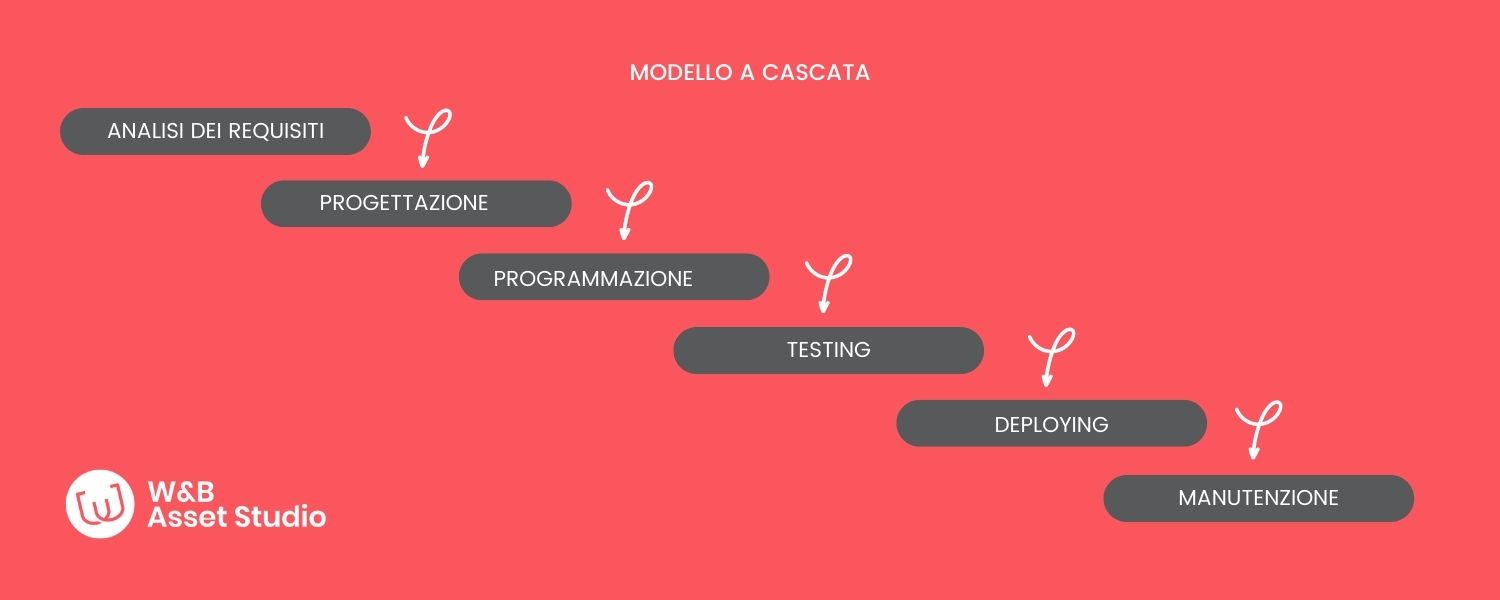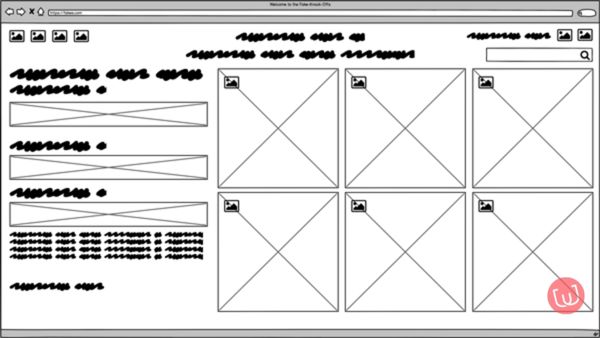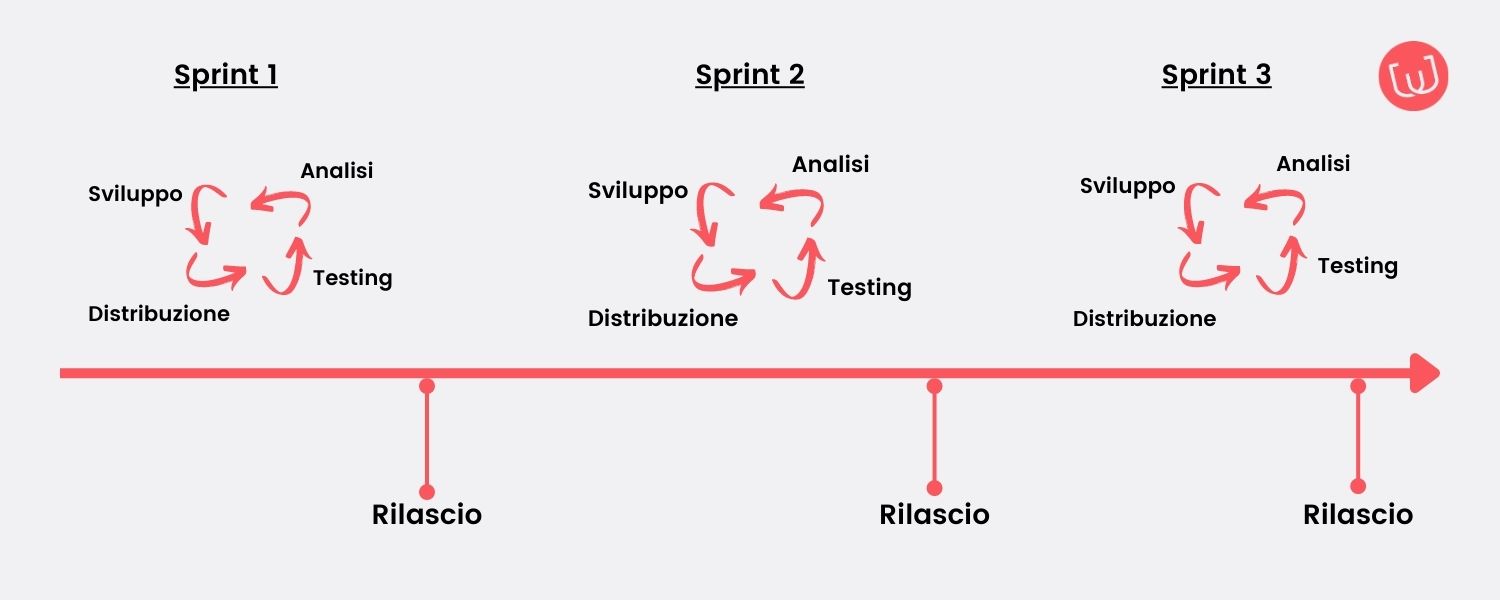What is meant by software design?
What does it mean to design software? It may seem like a daunting task, something very complicated, because software is sometimes a very complex entity, and it goes without saying that designing it is an extremely articulated activity.
But don’t panic, we’re here to clarify how software design works.
Digitalization today is penetrating all sectors, and often companies realize that they need custom software that can meet specific needs and have particular characteristics.
The demand for custom platforms is increasing, and everyone is diving into the adventure of software design. However, it often happens that one is unprepared to adequately tackle all the phases, either because they tend to skip some fundamental analysis steps and go straight to practice or because they insist too little on software testing. What is certain is that if you want to achieve concrete results, it is necessary to rely on a software house specialized in this field: only a team of professionals is able to follow all project phases precisely and meticulously.
So, what are the phases of software design? There are six and each one is preparatory to the other, here they are below.
- Requirements analysis
- Design
- Programming
- Testing and quality assurance
- Deployment
- Maintenance
The phases of the software development life cycle
Preliminary phase
Before diving into the actual development phases of a software, it is necessary to emphasize a preliminary phase that aims to contextualize the product that will be developed in terms of usage advantages, description of the problem that this software will solve, as well as the objectives that justify its existence.
To this end, it is necessary to compile the initial specifications of the software, namely:
- functional requirements, features that the program must have obligatorily;
- non-functional requirements, optional characteristics.
A very useful tool for schematizing this phase is the MoSCoW table, which assigns to all the features planned for the software the labels Must Have or Should Have to express the obligatoriness of a predicted functionality.
What I will illustrate to you is the most traditional and widely used development model, called the waterfall model. It foresees that the phases follow in a linear sequence.

1.Requirements analysis
Specifically, this phase concerns:
- The application domain, i.e. the context in which the software is intended to operate.
- Information about the application, such as purpose, definitions, system overview, references.
- The functions it will perform, user characteristics, constraints, or any dependencies.
- Performance requirements.
- User interface specifics.
- Database requirements.
This is the most important phase of software engineering, as making mistakes in this phase can result in unpleasant time losses, with the risk of reopening issues that have already been addressed and closed previously.
Such errors also entail significant financial losses, since an approximate description could lead to the final malfunctioning of the software.
For all these reasons, it is essential to approach this phase of collecting, describing, and specifying the requirements that the application must have with obsessive attention to avoid serious errors in subsequent phases.
2.Design
This is the phase in which data structures, functions, and behaviors are defined based on the constraints imposed by the requirements that are the focus of the previous phase. In practice, the architecture and structure of the individual components of the system are defined.
More specifically, it is a matter of defining the operational instructions for the implementation phase. These instructions must be adequately detailed, collected in a well-structured and understandable document. Therefore, this is also the phase dedicated to identifying the best implementation solution with respect to the defined functional requirements, non-functional requirements, and constraints.
The micro-activities of this phase can be carried out with different times and results, but as a result of the design, the architecture of the system is obtained, i.e. its structural organization, containing the software components, the interface of the components (i.e. the properties visible to the user), and the relationships between the various parts.
The design phase also takes into consideration factors related to the use of a concrete technology, which is why the design phase cannot do without the technologies used, unlike the requirements analysis phase. For this reason, during the design phase, all aspects of implementation are also defined.
There are very valid tools that can help us in this process, such as the Object Constraint Language (OCL) design language, but it is also possible to resort to the Petri net or class diagram, flow diagrams (Gantt), or its evolution, the UML activity diagram.
3. Programming
Finally, it’s time to write the code, an activity that should be accompanied by detailed documentation so that other professionals can also work on the project if necessary.
Since this phase of software design often has to meet tight deadlines, it’s necessary to use programs that provide all the necessary tools for writing source code in one solution, an Integrated Development Environment (IDE), which is software that supports programmers in code development, equipped with an editor, a compiler, an automatic building tool, and a debugger.
Although the analysis and design phases are crucial, the programming code writing phase is undoubtedly the most important: even if the analysis and design have been done well, if the code contains errors, the entire project may be compromised.
During the code writing process, the first debugging should also take place, that is, the elimination of the most evident and gross syntax errors that can damage the overall functioning of the program. In fact, the most advanced IDEs have efficient live debug systems that highlight unnecessary, repeated code portions, unnecessary variables, and so on in real-time.
4.Testing
After the programming and the first debugging phase, it’s essential to verify that the software’s operation conforms to the requirements defined in the requirements analysis phase. These types of errors are more difficult to detect than the evident ones in the live debugging phase: usually, they’re not syntax errors but conceptual or logical errors.
Therefore, during the testing phase, it’s essential to ensure that the application behaves as expected, and any behavioral discrepancies are reported to the programmers, who must investigate and then proceed to remove the elements causing these discrepancies.
5.Deployment
After all necessary tests are done, and an effective level of quality is achieved, the software is ready to go into production.
“Going into production” has different meanings depending on the type of software created. If it’s programs intended for sale or distribution (free software), production is when the product is released on the market. If it’s a program created and customized for a client, this phase is equivalent to installation and testing at the client’s premises. Finally, in the case of web applications, production represents installation and testing on the web server and its tuning.
At this point, the operational life of the created software begins, a period in which it performs the task for which it was designed and developed.
6.Maintenance
To ensure the proper functioning of the software over time, it is necessary to periodically update it, providing prompt and constant support to those who use the program on a daily basis.
Furthermore, during the life of software in production, corrective or updating interventions on the application may become necessary, which may also involve new phases of design, development, and testing. These types of interventions can be grouped into two families:
- Ordinary maintenance: These are corrective interventions justified by any errors that went unnoticed during testing or caused by the use of the program in conditions not foreseen during the design phase.
- Evolutionary maintenance: In this case, the interventions aim to modify or enrich the software with new functionalities, justified by new operational needs.
Generally, every program is subject, during its operational life, to corrective and evolutionary interventions.
The phases just described, as anticipated at the beginning, can be attributed to the waterfall development model. While this model is very common and easily adaptable to different types of projects, it can sometimes be inflexible: in fact, all phases must be approached linearly, and it becomes very difficult to go back and forth between phases. Any variation within one of the phases can cause delays and slippages in the schedule and inevitably lead to delaying the delivery date, which is the pivotal point around which all the phases revolve.
Other software development models
A brief overview of which development models are used can be useful to understand how the choice of development model can also influence the various phases.
Furthermore, each development team may have their own method, and especially each individual project may require modifications or adaptations to the usual method.
Each development method has its pros and cons, and there is no reference model. Here are the most commonly used development models today.
Evolutionary model
The novelty of this method is the concept of prototyping, which allows speeding up the software verification times since a simplified version of it is produced.
It is based on cycles consisting of 4 phases:
- Building the prototype
- Delivery of the prototype to the client
- Customer feedback and consequent considerations
- Possible modifications to the prototype based on received observations.
The prototype can also be a simple mockup, i.e., a basic interface, a sort of sketch, which does not provide actual program functionality but still has the advantage of reducing evaluation times for functional requirements and can be useful for further considerations on design aspects before moving on to code implementation. However, it does not bring any improvement in terms of actual programming.

Spiral model
This model no longer provides for development in linear phases but a continuous and repeated cycle of software creation phases until completion.
It can also be defined as a “meta-model” because it can be applied to other models and can be considered a sort of framework, a step-by-step scheme to follow.
Risk assessment is typical of this model and must be included in every development cycle.
Agile methodology
This is now the most widely used model not only in software design but also in project management.
The main objective of this methodology is customer satisfaction, who sees their software gradually grow thanks to rapid releases of software modifications.
However, it should be noted that the agile methodology is not an actual development model, but a set of operations that allows for the development of an efficient product in a short time, with autonomous workgroups and easy interactions with the customer.
Do you have an interesting project in mind? Or do you need customized software for your company? Discover our services and do not hesitate to contact us for any doubts or clarifications.






